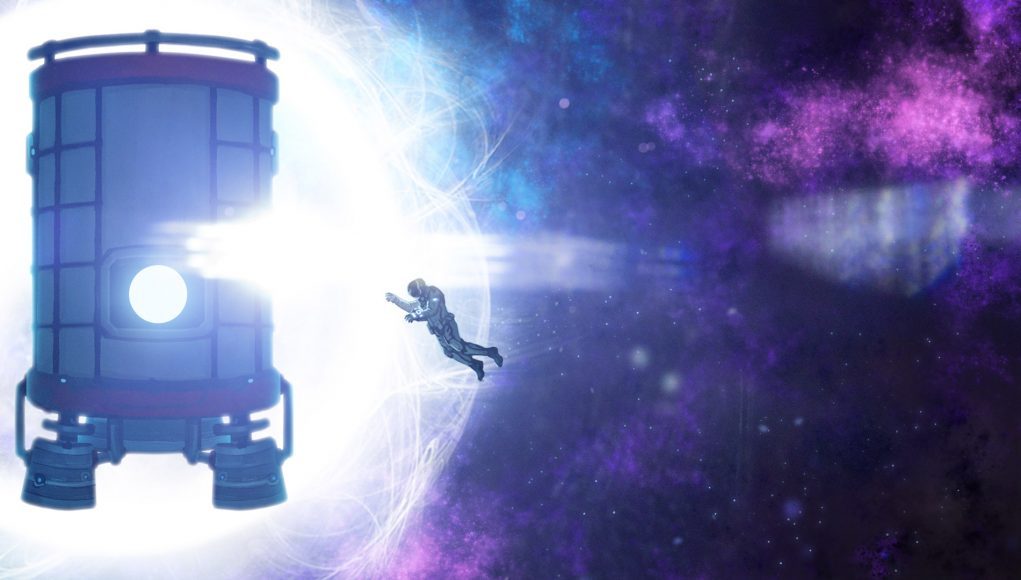Stranded in space with just an AI voice and your broken ship for company, you must scavenge for materials to survive, searching random debris floating nearby using motion-based, zero-gravity locomotion. Needing some polish but highly playable in its current state, Star Shelter is available now on SteamVR Early Access with support for HTC Vive and Oculus Rift.
This compelling space survival game is described as a ‘rogue-lite’ due to its procedurally generated world, and the significant resource management required to succeed—but presented with real-time, action-orientated gameplay. Perhaps it also refers to the not-so-devastating ‘permadeath’ of your character; dying in the game makes you restart as a different person (a new name appears in your pod), with your personal inventory wiped, but any progress you’ve made in completing objectives—along with your ship inventory and upgrades—are retained. Apparently this ties in with the backstory for the game, but you won’t find much in the way of lore at the moment, something that might be added at a later stage of development.
Lone Echo Locomotion
As mentioned in their first video blog, the developers at Overflow Games happily admit that Ready at Dawn’s zero-gravity VR adventure Lone Echo (2017) was their reference for the movement system in Star Shelter. Indeed it is very similar, although the ‘grip’ function is on the main triggers by default, and the wrist-mounted propulsion is activated by the grip buttons (or grip triggers on Touch), which might feel odd for Lone Echo/Echo Arena players.
You can swap these functions to bring the control scheme closer to Lone Echo, but currently this is somewhat flawed, as the main triggers are always used to activate certain commands, meaning that the inverted setting activates unwanted propulsion on any trigger command. The good news is that manoeuvring in zero-gravity by grabbing objects with the motion controllers continues to be a great locomotion system that’s immersive and comfortable for most players without the need for teleporting.

Unfortunately, this means Star Shelter can’t escape a direct comparison to one of the highest-quality VR productions ever created, and it falls short, feeling less intuitive, and more prone to glitches. Though this is to be expected considering this is an indie project compared to Lone Echo’s AAA sheen.
The game can be forgiven for lacking the complex hand animation system of Lone Echo, but it does seem odd that your character has practically no body, with no arms, legs, or even torso aside from a small chest piece. Along with this limited body presence, the movement doesn’t feel quite as natural in terms of maintaining and adjusting your momentum. Most notably, you will often come to instantaneous stops when bumping into walls, rather than bouncing in a more realistic manner. That said, there is some enjoyable physics at play here, particularly the recoil of your weapon, which propels you backwards if you’re not holding onto anything.
Unforgiving Survival Gameplay
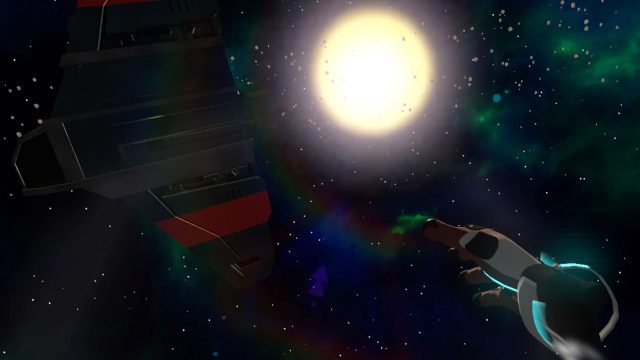
As a survival game, it is perhaps fitting that the optional tutorial doesn’t really give the player a thorough training; instead there is a strong suggestion that you’re expected fend for yourself. Being thrown into the deep end might be an ideal opening sequence for fans of the genre, but it could discourage some players expecting a shallower learning curve. There is certainly no downtime in the opening moments of the game, as you find yourself immediately floating in space surrounded by debris, with four main stats of oxygen, nutrition, energy, and health to maintain, and broken ship to fix if you want to sustain yourself in the long run.
Oxygen is the biggest issue at the beginning, as you’re constantly consuming the limited supply, and your wrist thrusters also use it—at an alarming rate. Small oxygen canisters floating among the debris can sometimes be difficult to find due to the randomised nature of the environment, and instead of being a safe haven, your ship almost feels like a hindrance. It will replenish your suit, but it also has a limited oxygen supply (at least before you can upgrade it), and is constantly under threat from random comet strikes.
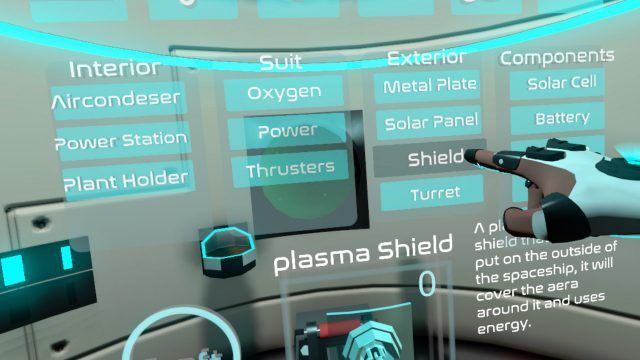
It took me a while to acclimatise to the management systems, partly because the wrist-mounted UI feels a little confusing, and partly because the relationship between your ship and suit (and the way they share and replenish resources) is not well explained. This meant inefficient use of oxygen just moving around the ship itself, and several deaths from suffocation. I don’t believe the game is necessarily too difficult—the balance is probably right—but if the systems were explained better from the start, it would avoid the frustrating trial and error learning process for new players.
The game is listed on Steam as suitable for seated, standing, and room scale VR setups, but you’re at a serious disadvantage without a reasonable amount of space to move. Whether you’re collecting an item, scanning some debris, or simply reaching for another surface to grab, a limited standing or seated play space means you’ll be using your thrusters to make small movements more regularly, wasting that precious oxygen. There seems to be some kind of forcefield in the middle of your ship, presumably to reduce your momentum when you’re close to the floating UI. I found this to be infuriating, as it felt like it was preventing me from leaving my own ship (something you have to do countless times) without wasting more oxygen.
Unfinished, But a Promising Start
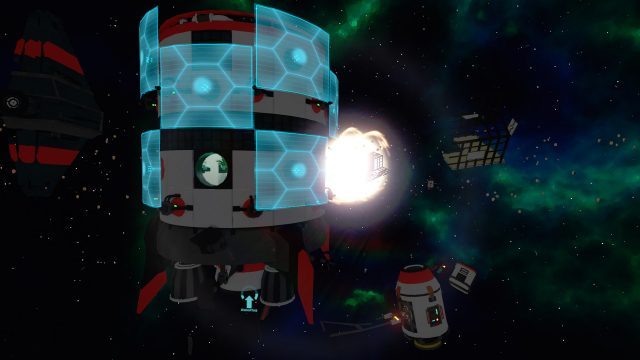
The developers appear to be rapidly improving the game and squashing bugs with regular updates, but I found number of small issues during my testing. Front-facing seated and standing VR users who require the rotation function might find the Vive touchpad inputs too sensitive; I was often accidentally rotating my view when trying to activate the scanner. (Perhaps that’s not a significant problem, as Vive users are far less likely to be using a front-facing setup in the first place, and the rotation works better on Touch with a positive flick of the analog stick.)
Speaking of the scanner, the effect features a glowing texture that seems to animate across the geometry based on the velocity of the object. This looks odd at the best of times, but I found that if I happened to be very close to the object I was scanning, particularly if it featured a large surface, the moving texture would cause vection, making me feel like I was moving instead, which I suspect could be a nausea trigger for some players.
While the Oculus Touch ergonomics feel more suited to this kind of game, the grip function did not appear to work on my left controller, unlike when using the Vive. Some of the option toggles for controls and graphics settings seem to work the opposite way round on first selection—and the shadow and ambient occlusion options seemed to really hurt performance.
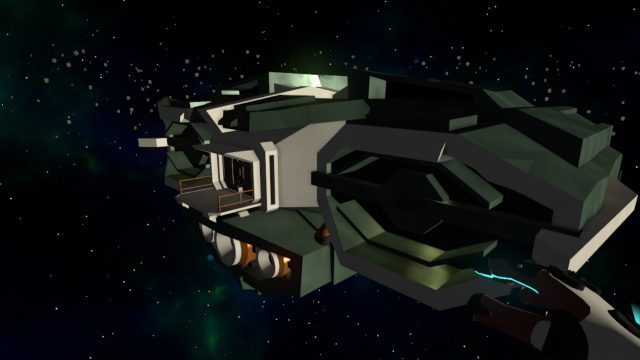
The visual style is restrained, with little in the way of detailed geometry or textures, so it is surprising that the game struggled on a GTX 1080 with those effects enabled. I also experienced a few clipping problems—mostly inconsequential—but I was able to clip my head through the wall of my ship, giving me an oxygen warning as if I was outside without a closed helmet, and occasionally important objects would become stuck in other surfaces.
Work-in-progress problems aside, Star Shelter is an interesting take on the survival genre; Lone Echo movement with survival sim gameplay is a compelling combination. The result is an odd mix of relaxation and high stress, as the serene quiet and effortless movement in space combines with the constant danger of energy depletion and threats from comets and random drone attacks. The sense of exploration once you hack into nearby ships is also quite powerful, although this is likely dependent on the number of assets available to be randomised in order to keep that feeling fresh.

